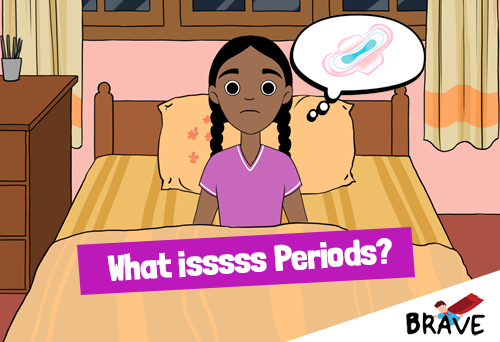




In sexual activity, infections transmitted from one person to another are referred to as sexually transmitted infections (STIs). Some infections are present in vaginal secretions, semen, or blood. Others are transmitted to the skin through direct contact between sexual organs. These infections can affect anyone engaging in sexual activity.
These usually do not show any symptoms in the early stages. Therefore, many people do not know if they have a sexually transmitted infection.
The best way to prevent sexually transmitted infections (STIs) is by practicing safe sexual behavior, which means always using a condom during sexual activity. Condoms act as a barrier, preventing the exchange of bodily fluids and reducing the chance of direct contact between the skin in sexual areas. A variety of condoms are available in the market, differing in size, flavor, and texture.
Even if you use condoms, it’s important to get tested regularly if you are sexually active. Testing is the only way to know whether you have an STI. These tests can be done for free at government hospitals. To book an appointment, visit know4sure.lk. This government-provided service is committed to maintaining your privacy and confidentiality.
Sexually transmitted infections (STIs) are primarily categorized into four groups:
01 . Bacteria - Syphilis, Chlamydia, Gonorrhea
02. Viruses - Herpes, Genital Warts, HIV
03. Fungi - Candidiasis
04. Parasites - Scabies, Trichomoniasis
Below are some of the common symptoms that may occur in the early stages of these infections.
* Pain or burning during urination or ejaculation
* Discharge of pus or a watery or milky solution from the penis
* Protruding testicles and/or feeling tight
* Swelling around the anus
* Urinating more than usual
* Genital itching
* Warts around the genitals and anus
* Unexplained persistent fever
* Abdominal pain.
* Abnormal discharge from the vaginal canal.
* Bleeding outside of your menstrual cycle.
* Pain during sexual intercourse.
* Pain or burning sensation while urinating.
* Appearance of warts around the genital and anal areas.
* Swelling around the vaginal or anal regions.
* Increased frequency of urination compared to normal.
* Bleeding from the vaginal canal after sexual intercourse.
* Foul-smelling discharge from the cervix.
* Itching in the genital area.
* Blisters on or around the genital area.
* Swelling or tightness in the vaginal region.
* Persistent fever without a known cause.
You may notice that these infections have common symptoms. A sexually transmitted infection may take some time to develop symptoms and, in many cases, they don’t present any symptoms at all. This is why it’s important to get tested if you’ve engaged in unprotected sexual activity (without using a condom). Early detection makes it easier to treat these infections effectively, giving anyone the chance to recover and live a normal life.
National STD and HIV Control Project The following are the reported numbers of sexually transmitted infections in 2023 according to data published by (https://www.aidscontrol.gov.lk/index.php?lang=en )
* HIV - 605
* Early Syphilis - 219
* Late diagnosed syphilis - 551
* Congenital Syphilis - 07
* Gonorrhea - 756
* Chlamydia - 11
* Genital herpes - 2343
* Genital warts - 2134
* Trichomoniasis - 57
* Candidiasis - 2417
* Bacterial vaginosis – 996
* Other sexually transmitted infections including scabies and hepatitis B – 326
*This data includes only incidents reported to government clinics.
If you’ve had unprotected sexual activity, the most important step you can take is to get tested. These tests are available for free at government hospitals. Additionally, if you prefer, you can get tested through private healthcare providers. For more details about testing, you can visit the website maintained by the National STD/AIDS Control Programme:
https://www.aidscontrol.gov.lk/index.php?lang=en
You can also book an appointment for testing through the Know4Sure app or website, making it even more convenient to take control of your sexual health.
Here are steps that young individuals can take to prevent sexually transmitted infections (STIs):
Delay engaging in sexual relationships until marriage. Before marriage, have an open discussion with your future spouse about whether they have had unprotected sexual encounters with previous partners.
After marriage, limit sexual activity exclusively to your spouse. Ensure to practice safe sexual behavior within the marriage as well.
By adopting these practices, you can significantly reduce the risk of STIs while promoting mutual trust and communication in relationships.
Avoid engaging in unprotected sexual activities with temporary partners. Always use a condom correctly during every sexual encounter. If you happen to have unprotected sex with temporary partners without a condom, seek medical attention immediately.
Get treatment if you have a sexually transmitted infection.
Below is a brief description of each infection.
Here is a brief overview of bacterial infections.
For men, discharge from the urinary tract or white, creamy discharge, along with pain or burning during urination.
For women, occasional discharge from the vaginal area.
In many cases, early-stage symptoms may not be visible in women.
A painless sore in or around the genital area
Swelling of the lymph glands in the groin
A secretion is released from the vagina of women and from the testicles of men.
Burning and pain during urination.
The cervix becomes infected.
Swelling of the genital area in men.
You may have noticed that these infections share common symptoms. A sexually transmitted infection can take some time to show symptoms. Often, no symptoms are evident in the early stages. Therefore, it is important to seek testing after engaging in unprotected sexual activity. If detected early, these infections can be treated easily, allowing anyone the opportunity to recover and live a healthy life.
There is no complete cure for viral infections. However, if identified early, the infection can be managed, and individuals can live a normal life. Below is a brief overview of viral infections.
The Human Papillomavirus (HPV), a virus that spreads through intimate contact, has over 200 strains, around 40 of which can be sexually transmitted. Yeast infections can occur in and around the vagina, vulva, cervix, anus and testicles as well as around the mouth. These types of viruses are caused by sexual contact and skin-to-skin contact in the genital area.
Some varieties are not sexually transmitted but can cause warts on the leg or toes.
Many people who are sexually active may contract the Human Papillomavirus (HPV), though some show no symptoms. Certain HPV strains are linked to the development of genital warts and increase the risk of cancer.
Strains like 16 and 18, in particular, are associated with higher cancer risk, while others like 6 and 11 cause genital warts.
Early detection of human papilloma virus can prevent serious health problems. Therefore, it is important for sexually active women to go for a Pap test.
Herpes infections are caused by two main strains of the virus: Herpes Simplex Virus 1 (HSV-1) and Herpes Simplex Virus 2 (HSV-2). These strains can cause sores in various areas of the body, including the vagina, vulva, cervix, scrotum and testicles, groin, anus, mouth, throat, lips, and even eyes.
Herpes is transmitted through skin-to-skin contact with an infected person. The virus can spread even when symptoms are not visible, and the sores may sometimes be mistaken for other skin conditions. Even individuals without symptoms can transmit the virus. Sexual intercourse is not necessary for herpes infection to be transmitted. The virus can also be spread by touching blisters and sores caused by the virus in the genital area or mouth of someone who has the virus active.
Although it cannot be fully cured, treatment can help manage symptoms and prevent transmission to others. By seeking treatment, the frequency and severity of outbreaks can be reduced, minimizing the risk of passing the virus on to others.
Also known as human immunodeficiency virus
This virus attacks the white blood cells that make up our immune system: mainly the CD4 cells. CD4 cells are a type of white blood cell that naturally play a major role in fighting infection.
If this virus is infected and left untreated, the virus can damage the immune system HIV attacks and destroys CD4 cells, weakening the immune system. This makes the person vulnerable to opportunistic infections. Over time, if untreated, multiple infections can occur, leading to AIDS (acquired immunodeficiency syndrome), a severe condition where the immune system is significantly compromised.
HIV is transmitted through bodily fluids such as blood, semen, vaginal fluids, and breast milk. For transmission to occur, these fluids must come into contact with another person's bloodstream, often through cuts, injuries, or open wounds that expose the circulatory system.
HIV can be transmitted through anal, vaginal, or oral sex, with the highest risk associated with anal intercourse.
The mucosal tissues in the vaginal, anal, and oral areas are more vulnerable to cuts or abrasions during unprotected sexual activity, which can facilitate HIV transmission. These injuries make it easier for the virus to enter the blood stream during sexual contact, increasing the risk of infection.
A drug has not yet been found to completely cure HIV. But treatment is used to control the virus. The ART treatment given for HIV controls the spread of the virus and makes the amount of the virus undetectable. Therefore, HIV is not transmitted from a person who receives regular treatment.
Since 2018, Sri Lanka has successfully prevented mother-to-child HIV transmission by ensuring that all pregnant women undergo HIV testing. This approach helps identify infected individuals early and provide them with timely treatment.
The best way to know if you have a sexually transmitted infection is to get tested. Viral infections cannot be completely cured, but fungal and parasitic infections can be completely cured. The most important thing is to know if the infection has been transmitted in the early stage.
Candidiasis is an infection caused by a yeast called Candida. Certain types of Candida can cause infections among humans, with Candida albicans being the most common. This fungus typically resides in areas like the mouth, genital tract, intestines, and throat. When uncontrolled, it can lead to infection. This fungus can even spread to the bloodstream, affecting internal organs such as the brain, heart, or kidneys.
Candidiasis infection can be cured with regular treatment.
This disease can be transmitted even without intercourse.
Scabies is an infection caused by a very small parasite that causes itching on the skin. It can be transmitted through unprotected sexual contact or skin-to-skin contact.
Scabies parasites lay eggs beneath the surface of the skin, causing a significant increase in their population. As the parasites inhabit the skin, symptoms like itching, rashes, and sores appear.
Although most adults are infected with scabies through sexual intercourse, scabies parasites can also be transmitted to our body by sharing towels, unwashed clothes, and bed sheets of infected people. But it is very rare that scabies is transmitted through handshakes and greetings.
Treatment for scabies often involves creams or lotions, and in some cases, oral medication may be recommended by doctors. Along with treatment, improving personal hygiene is crucial for recovery. Regular washing and cleaning areas where mites may reside, like bed linens and clothing, helps prevent further infection.
It’s important to note that scabies can spread through various means, not just sexual contact.
Trichomoniasis is an infection caused by a very common parasite called Trichomonas. During sexual intercourse, these parasites can be transmitted through sexual fluids, such as vaginal secretions and semen.
This infection is not transmitted during normal interactions, such as hugging, kissing or shaking hands.
Trichomoniasis is a curable infection with treatment.
Many individuals with this infection may not show any symptoms, but they can still transmit the infection. Maintaining safe sexual practices can entirely prevent the transmission of trichomoniasis.



Challenge yourself and your friends to test your knowledge, take the quiz
Access to these contraceptives is made easy through public hospitals and health centers where they are provided for free. Families can talk to doctors and nurses to learn about.

Sexual and reproductive health



Things to Read
Menstruation begins during the age of 10 to16 years and continues until menopause around the late 40s or early 50s,...
Sexual and reproductive health



Things to Read
It is important to learn about parts of the sexual and reproductive system to enjoy a fulfilling sexual and reproductive...
Sexual and reproductive health



Things to Read
Maintaining sexual and reproductive health
Sexual and reproductive health



Things to Read
Sexual behavior and sexual satisfaction
Sexual and reproductive health



Things to Read
Let's understand the sexual and reproductive system
Sexual and reproductive health



Things to Read
Let's face the challenges of youth
Sexual and reproductive health



Things to Read
Sexual and reproductive health conditions affecting men
Sexual and reproductive health



Things to Read
How to maintain personal hygiene?
Sexual and reproductive health



Things to Read
Sexual and reproductive health conditions that affect transgender individuals
Sexual and reproductive health



Things to Read
How does a pregnancy happen?
Sexual and reproductive health



Things to Read
Let's face adolescence
Sexual and reproductive health



Things to Read
Reproductive health concerns for Men
Sexual and reproductive health



Things to Read
Things to consider before planing a pregnancy
Sexual and reproductive health



Things to Read
Pregnancy related concerns
Sexual and reproductive health



Things to Read
How to keep my body clean